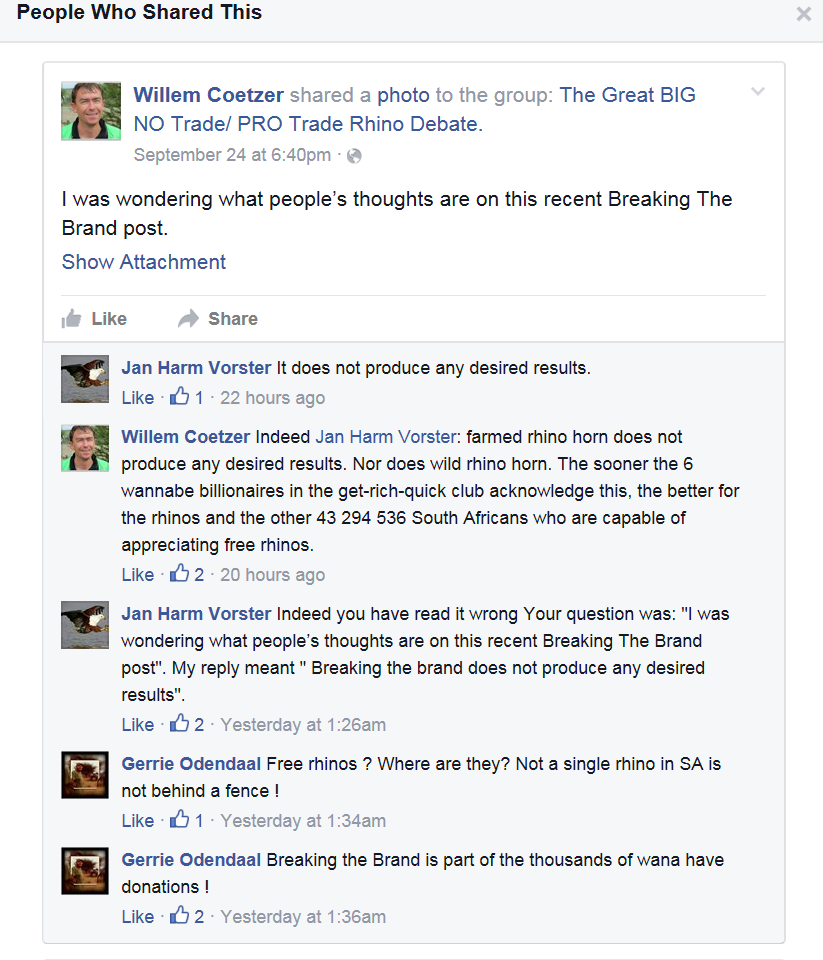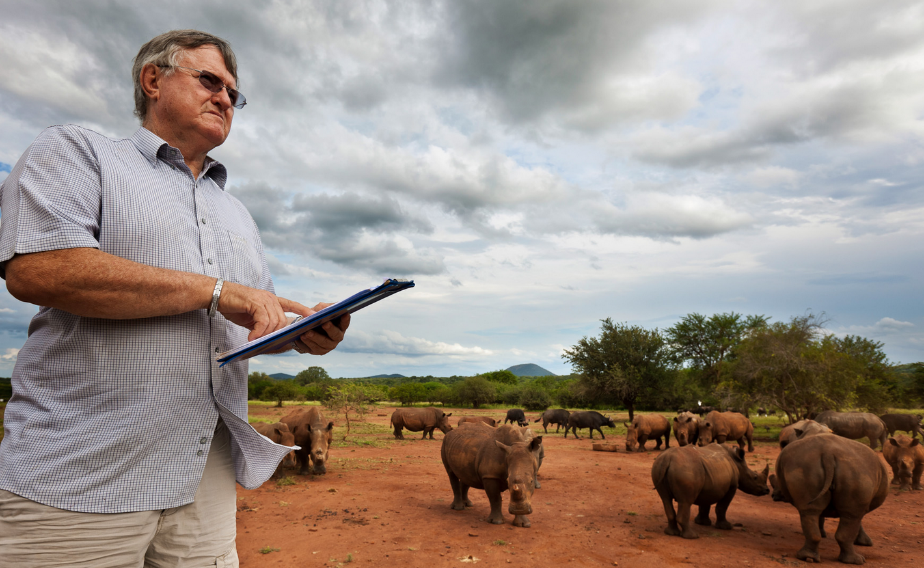
Pro-Trade Response to BTB Blog: Viet Nam’s wealthy buyers of rhino don’t see horn from farmed rhino as a substitute product.

Given that the blog talks about the wealthy Vietnamese elite who can afford genuine, wild rhino horn are not interested in a farmed ‘product’, which is a critical point in the legalised trade debate, it was not a surprises that this blog was shared with the group: The Great BIG NO Trade/PRO Trade Rhino Debate. So far it has generated 5 comments and 3 patterns of response:
- Not a single rhino in SA is not behind a fence
- Breaking The Brand has not produced the desired results
- Breaking The Brand wants donations
Before I responds to these three points, I just wanted to point out that no one commented on the two key statements that are critical for the case of farming/trading rhino horn (and here I am making that assumption that the primary objective is to stop poaching).
- While the demand for rhino horn remains, the poaching of rhinos from the wild will continue; farmed rhino will not help as it is not seen as a substitute product by the Vietnamese elite who can afford genuine, wild rhino horn.
- The Education for Nature Viet Nam adverts, mentioned in the blog, stated that legalising the trade could ignite an explosion in demand that could never be satisfied, let alone controlled. If the pro-trade people say that they disagree are they saying that ‘we know the Vietnamese better than the Vietnamese’, and if pro-trade people say they are better placed to analyse the Vietnamese users of rhino horn than ENV, then prove it. Why haven’t they published any user/market analysis they have done etc. Could it be that they haven’t done any???
So now let me respond to the three patterns from the comments.
Comment 1: Not a single rhino in SA is not behind a fence
While we know the level of protection required to save rhinos means that even in national parks, including Kruger Nation Park, rhinos have a ‘human’ anti-poaching fence, this is NOT the same as ‘farmed’ rhino.
When large numbers of rhinos are collected for farming purposes, with a view to a future legalised trade, there is evidence of:
- Supplementary feeding
- Unnaturally high population density which can impact the speed at which disease is spread
- Docile behaviour as a result of dehorning
This is a different scenario and produces a product that is not of interest to the Vietnamese elite who can afford genuine, wild rhino horn.

Comment 2: Breaking The Brand has not produced the desired results
Since launching our first campaign in September 2013 BTB has spent the total of $58,000 Australian Dollars on our two campaigns in Viet Nam. This is 100% of the donations received (we are all volunteers who cover our own costs for research, administration etc). So let’s revisit that sum of money AU$58,000 converts to US$40,762 (today’s exchange rate) which is pocket change when you consider the hundreds of millions spent on anti-poaching and conservation measures. This ~US$41,000 has:
- Triggered chatter in our target group in Viet Nam and beyond this group
- Triggered chatter in range countries about do we really understand the nature of the demand
- Triggered thinking, conversation and collaboration in the conservation space about how to correctly define demand reduction.
The full results of BTB ~US$41,000 spent to-date can be found in the Breaking The Brand Project Second Annual Report.
So from a Return On Investment perspective we believe we have ‘punched above our weight’.
Comment 3: Breaking The Brand wants donations
Yes, we do want more donations. If we can achieve what we have on ~US$41,000 we certainly believe that if we had US$2 Million to spend on demand reduction campaigns in Viet Nam, targeting the primary users in a way that resonates with them, we could make inroads into their desire for rhino horn.
So let’s come back to the blog and pose the questions highlighted in the blog to the pro-trade lobby and the people set to make billions of dollars from a legalised trade.
Let’s not let them get away with trying to divert people from that fact that they are not responding to these basic, business questions. Don’t let them use their standard ‘lobbying 101 techniques’ of deflection and counter-attack.
The questions I posed in the blog are not only valid, they are the starting points of any business analysis and business case. Again maybe they can’t answer the questions because they haven’t done the user analysis (and by this I mean the analysis of the people who can afford to by genuine, wild rhino horn, not the 90% of people in Viet Nam duped in to buying fake product).
If they can’t answer the basic questions underpinning their so-called business case and simply go into attack mode, which I have noticed tends to be the standard response to anyone who questions them, maybe we can let them know that they are being overly emotional!
Obviously the lack of any useful response means that there is neither the willingness nor the ability on the pro-trade side to engage with the real aspects of the debate. Similarly, if the response is silence this is also be very telling!
These are the views of the author: Dr. Lynn Johnson, Founder, Breaking the Brand
